Choosing indoor plants with yellow flowers
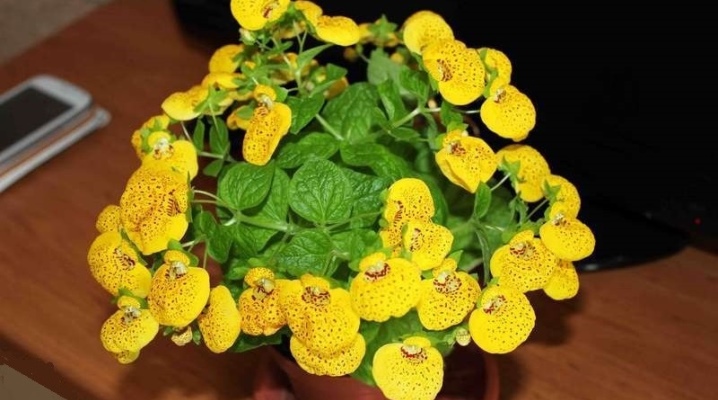
Amateur flower growers in search of another attractive specimen for their home collection surf the Internet, while professional breeders are breeding more and more new varieties of indoor plants. Today we will talk about those of them that are famous for their beautiful colors of sunny yellow.
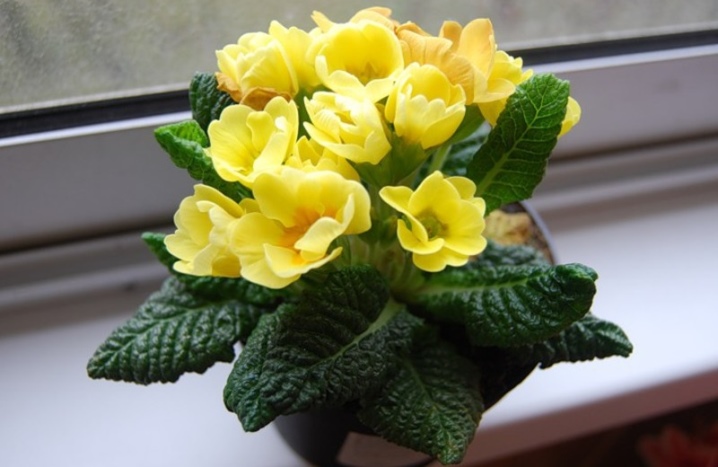
Peculiarities
Plants with yellow flowers have many admirers. And this is not surprising, because they have a number of advantages over the others:
- yellow reminds of summer, the sun, it is bright and cheerful;
- when you look at such a flower, your mood rises, your health improves;
- many representatives of domestic flora, which have a yellow tint of petals, are also famous for their beautiful leaves;
- plants help maintain a comfortable level of humidity in the room, produce oxygen and absorb carbon dioxide, protect households from electromagnetic radiation;
- according to legends, a yellow flower protects the house from negativity, acts as a guardian of love and harmony, and also helps the owners to increase their well-being.

Views
There are a lot of varieties of yellow-flowered indoor plants, but today we will talk about the most beautiful of them.
Abutilon or indoor maple
A very interesting and unusual plant with cupped 5-petal flowers hanging down from top to bottom. By the way, they are not only yellow, but also orange, purple and bright red. Abutilon blooms almost until winter, and if you do not reduce the intensity of watering and install additional lighting, then it will continue to please the eye even in winter.
It was named maple because of its characteristic carved leaves, reminiscent of the leaves of the tree of the same name.
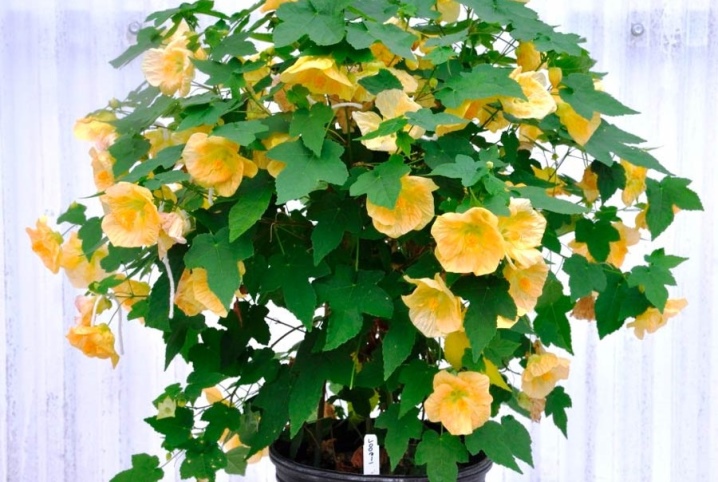
Clivia
A plant with a very unusual structure. Below, long fleshy leaves of a dense green color form a rosette, from which a single thick stem grows. Its top is crowned with a spherical inflorescence, collected from 10-20 funnel-shaped flowers, reminiscent of Krasodnev flowers. This plant stands out effectively from the rest of the home flora.
Clivia loves light, but does not tolerate direct rays and does not like heat. The optimum temperature for it is + 22 ... 25 ° C in summer and + 14 ° C in winter.
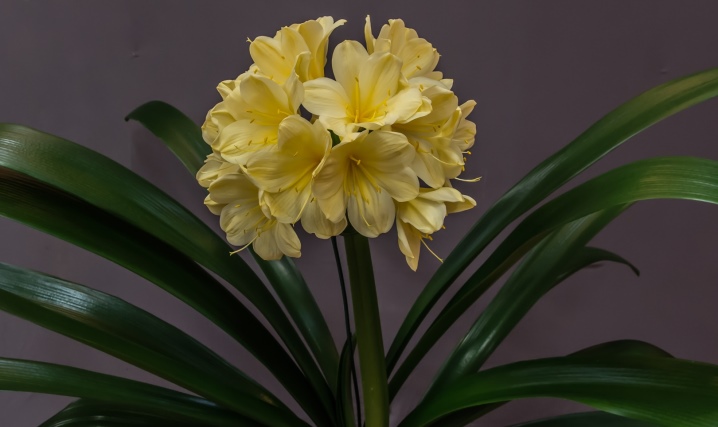
Pachistachis
Another unusual handsome man who is easily recognizable by his deep yellow candle colors. Large elongated dark green leaves perfectly set them off.
Pachistakhis is another lover of low temperatures. The optimal place to live in an apartment is away from heating radiators, in some corner where scattered sunlight falls. Moderate watering is desirable, water must be defended.
If you want to feed your "pet", use fertilizer for flowering houseplants, which can be purchased at any flower shop.
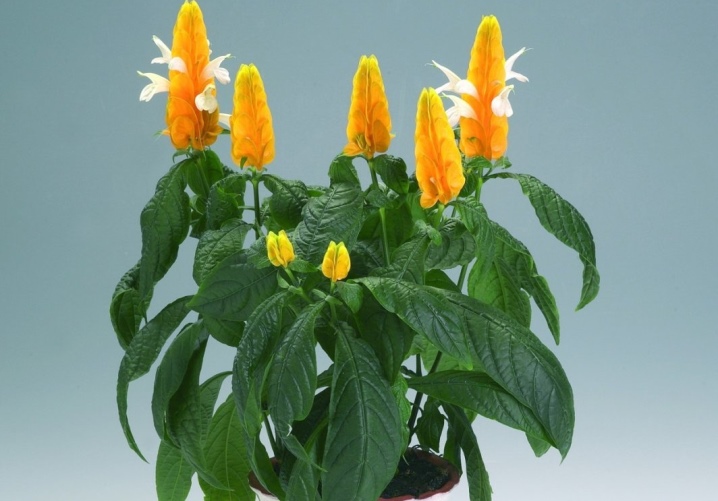
Calathea saffron
If you see a plant with oval leaves, dark green on the front side and purple on the seamy side, from the thick of which star-shaped candle flowers "peep out" on straight strong stems, you should know that you are looking at saffron calathea. She is one of the most beloved flowers among amateur flower growers, since she has bright external data, but she is not capricious in leaving. It can even stand in a corner where sunlight does not fall.
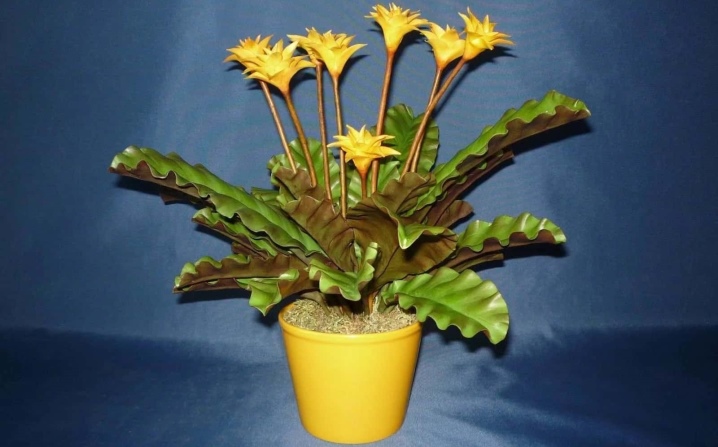
Begonia
Yellow begonia is our next heroine, you can't say otherwise. By its appearance, it resembles a bouquet of blossoming yellow roses with semi-double petals. A feature of this plant is the ability to bloom all year round. Begonia is famous for its ability to purify the air from harmful impurities, which is why it is recommended to put it in apartments and offices after repair work there.
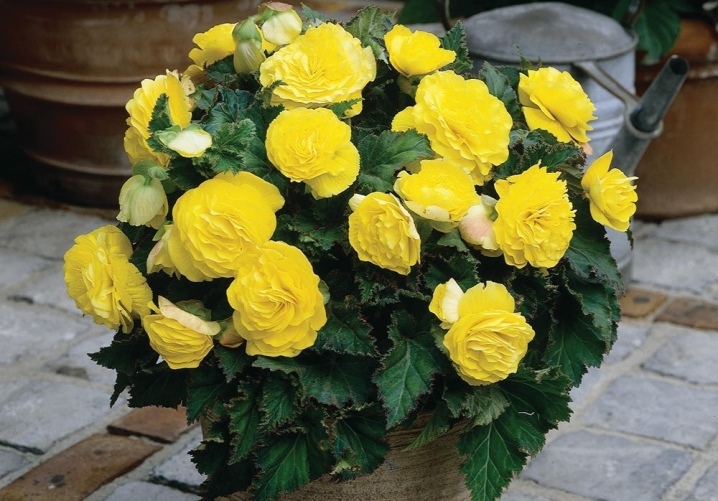
Guzmania
A flower surprisingly reminiscent of the "tail" of a pineapple. Its structure is very peculiar: alternately growing light green leaves form a rosette, smoothly turning into a flower. It happens not only yellow, but also pink, orange, red, even burgundy.
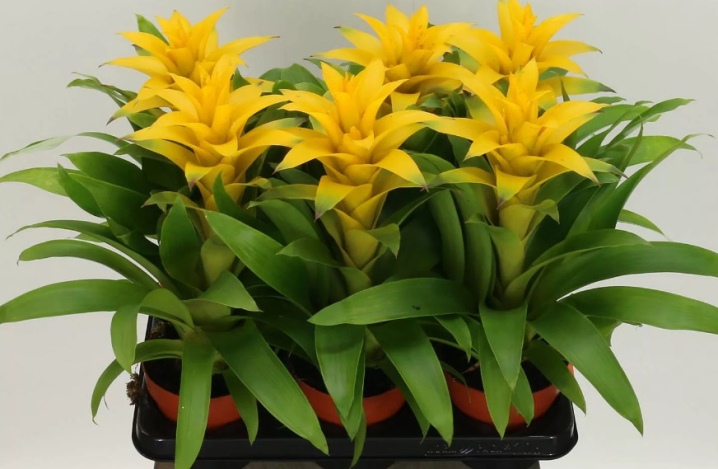
Acanthocalcium
This is a cactus. It has the shape of a ball and sharp thorns. A yellow flower modestly "nestled" on the side, giving this formidable "hedgehog" a surprisingly delicate look.
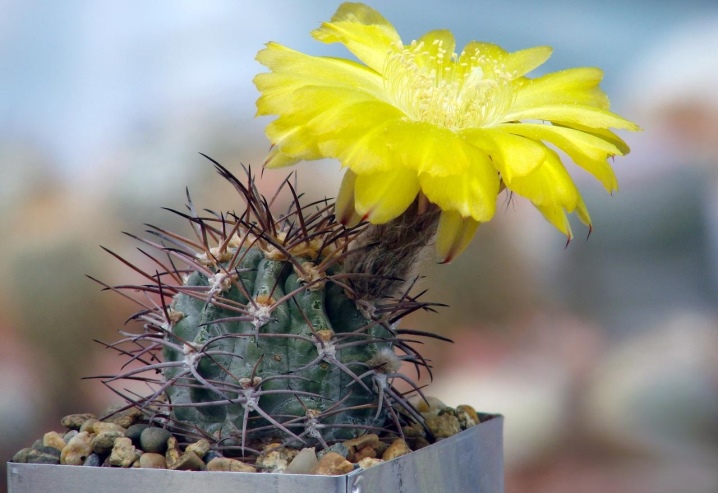
Primrose
This plant is often found both in the garden and at home. Among the yellow varieties, the Roseanne terry primrose and the Daniela stemless primrose are distinguished. The flowers of the culture are small, grow on high peduncles or in the center of the leaf rosette.
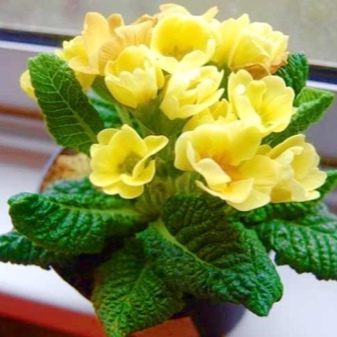

Zantedeschia or calla
Amazingly beautiful plant. Its large, bright green leaves on thick cuttings grow straight from the ground, in the middle of them are funnel-shaped lemon-yellow flowers. Zantedeschia spreads a pleasant vanilla aroma around it.
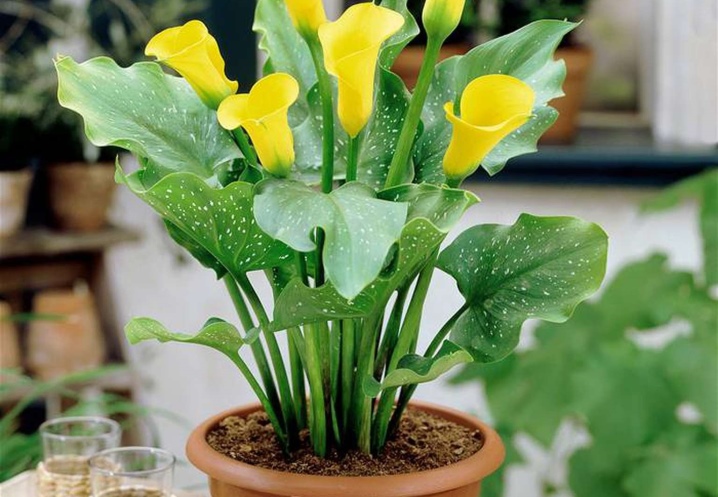
Kalanchoe Kalandiva
Most often we meet with this plant among the recipes of traditional medicine, since it is medicinal. However, the appearance of the Kalanchoe is quite spectacular - its small yellow flowers, similar to roses, are collected in hemispherical inflorescences and look very elegant and original.
The plant is a succulent, loves water (but not its stagnation).
Prefers deciduous soil with the addition of humus and peat-sand mixture.
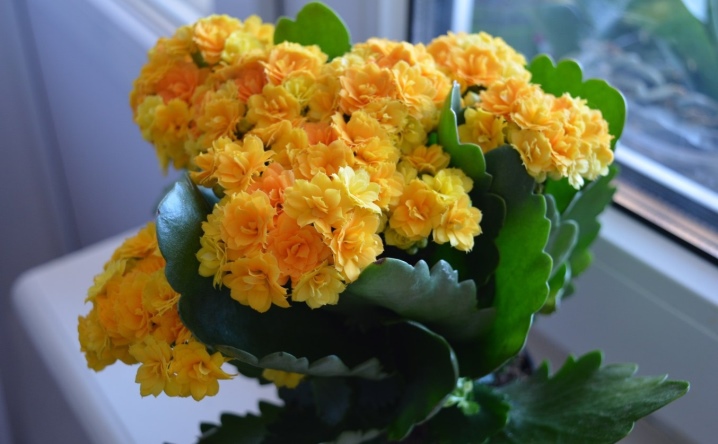
Jacobinia yellow
A flower that looks like a salute of festive fireworks. Unpretentious, blooms all year round. Loves the sun, night coolness and warmth during the day.
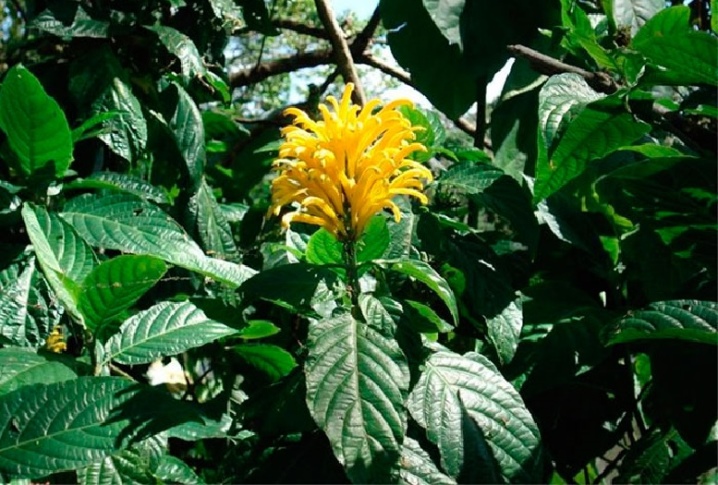
Glottiphyllum lingual
Unusual dwarf succulent. Flowering occurs twice a year - in spring and autumn. Glottiphyllum flowers resemble a dandelion, and they also have one feature: in the sun they open their petals, and at night they close them.
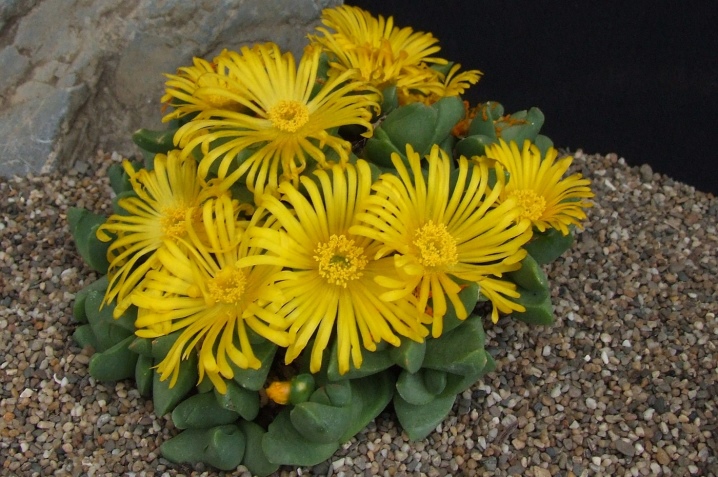
Calceolaria
This is truly a wonderful miracle. The structure of her flowers is very unusual and recognizable - they look like plump wallets or shoes. Their colors range from bright yellow, speckled with red spots, to scarlet. There are many flowers on the calceolaria bush - sometimes their number reaches 50.
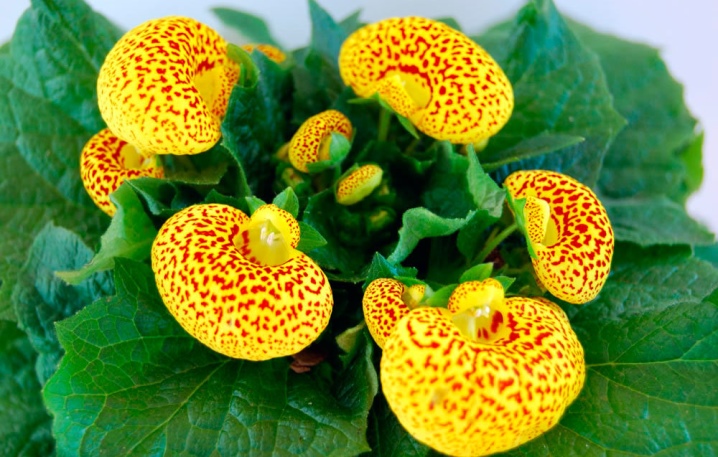
Titanopsis
Succulent plant. It is short (up to 3 cm). It blooms with small light yellow chamomile-like flowers that open only when the sun is shining - in the morning and evening hours, as well as in bad weather you will not see them, they will “hide” behind the leaves.
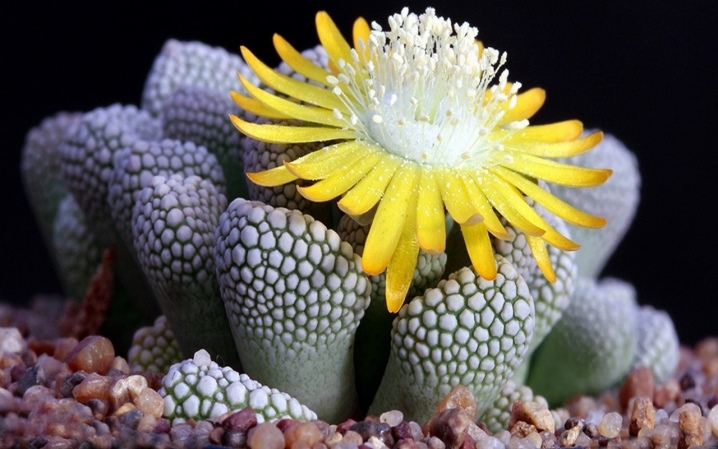
Eriocactus or a parody of golden prickly
A charming "fluffy" miniature representative of cacti. It is distinguished by a round shape, white spines and a bright yellow flower growing at its top. Eriocactus bloom starts at the age of 3 years.
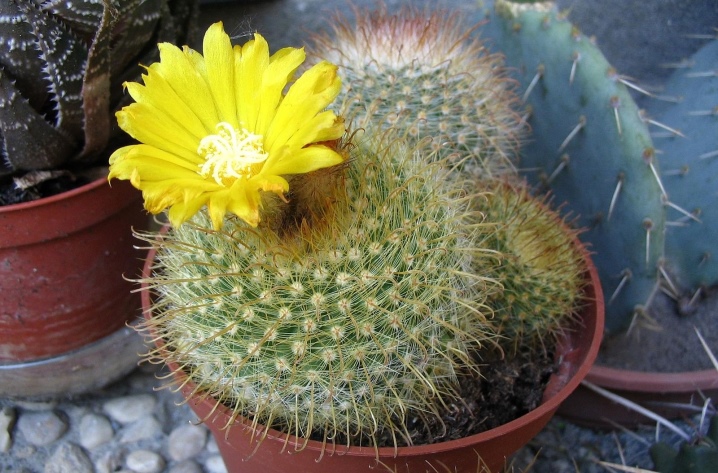
Narcissus
Most often, we meet planting daffodils in the open field, but growing them in an apartment is also quite possible. It does not require special care, but there is one nuance that is worth knowing.
The fact is that the daffodil blooms only once indoors, after which the bulb is transplanted to the site.

Gerbera Jameson
A very attractive sunny plant. Gerbera has a rather capricious character, she is demanding to care, although her beauty is worth it. Plants are not only yellow - their color is varied and can be white, pink, purple, red. There are also two-color representatives.
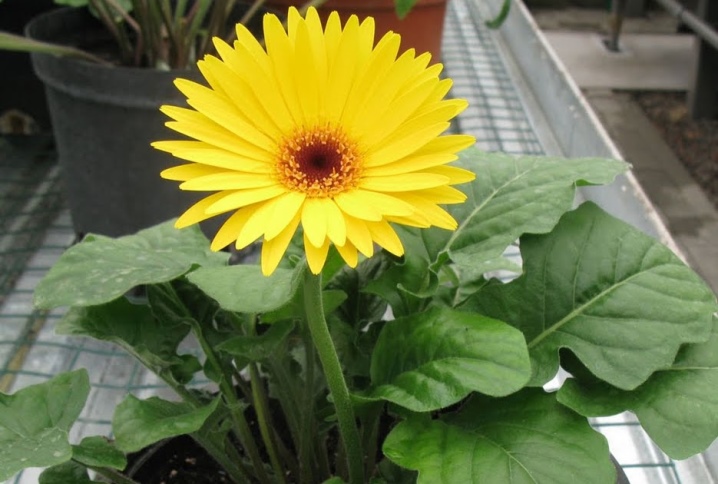
Afelandra
This plant, in addition to the rich yellow candle flower, attracts the attention of the leaves - their color is dark green, and the veins are light green, almost white, pronounced. Afelandra is a shrub that can grow in height up to one and a half meters.
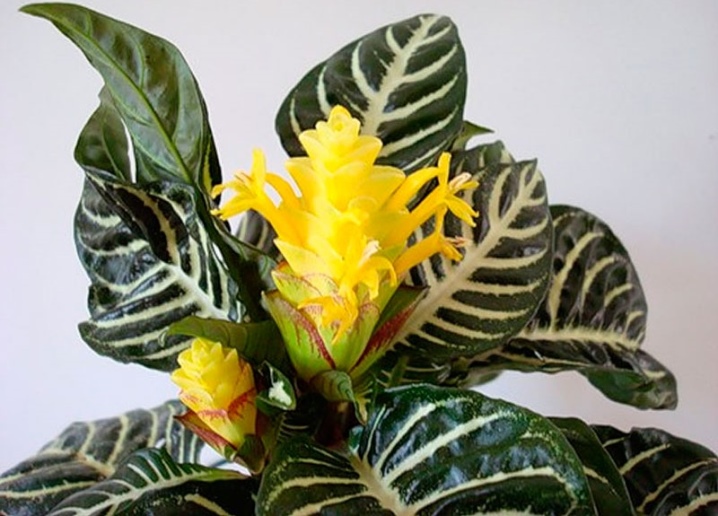
Care Tips
There is no single piece of advice on how to care for yellow-flowered plants, as they are of a wide variety of species and require different treatments. For example, begonia, primrose, glottiphyllum, jacobinia are hassle-free "pets", they can be successfully cultivated even by novice growers. But Jameson's gerbera, Afelandra, Calceolaria are capricious "ladies" who require increased attention.
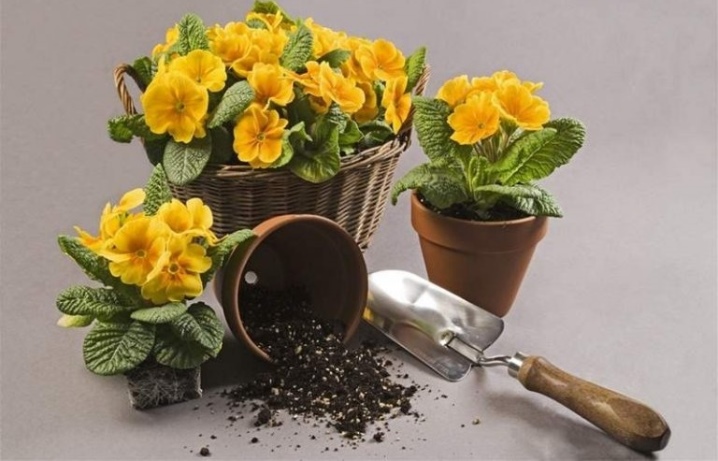
Let's talk a little about the nuances of caring for them.
Gerber Jameson needs:
- water regularly;
- feed;
- replant every year;
- periodically inspect for harmful insects.
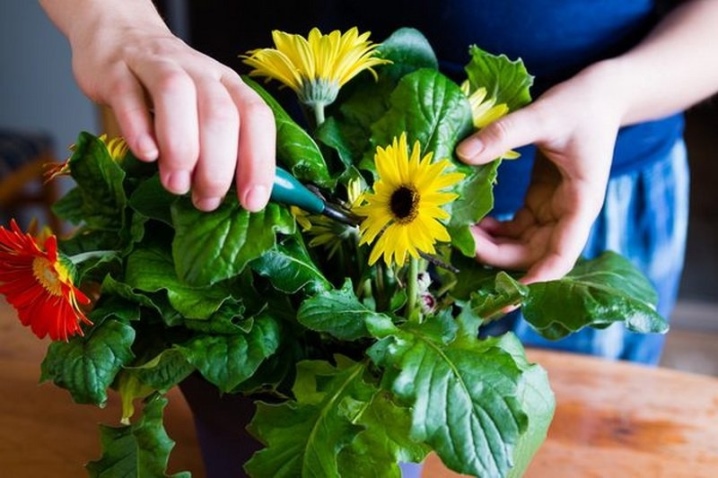
For her to grow well, she needs good lighting, but without direct sunlight.
In summer, it is better to take it out to the loggia / balcony (if there is glazing). Watering is done twice a week, if it's hot outside - even more often. The water should be at room temperature, separated. Twice a month, during the period of active growth and flowering, top dressing (complex fertilizer) is applied.
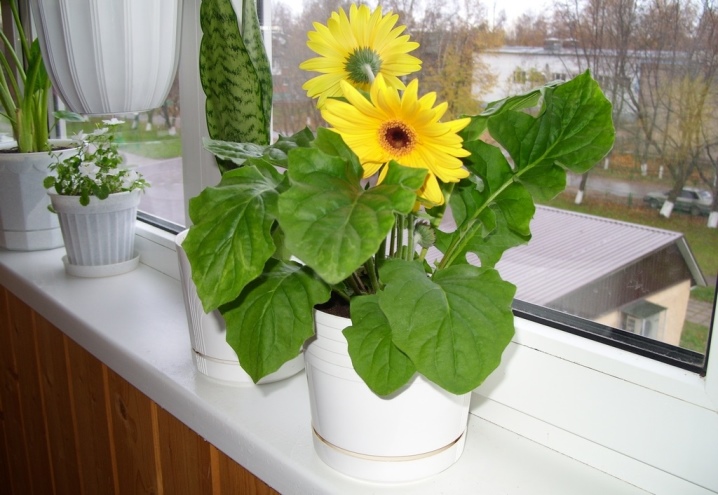
Calceolaria needs high humidity. To do this, the young are covered with a cap, placing a container with water next to it. Watering calceolaria is necessary frequent, but not plentiful. The water should be warm. If excess liquid drains into the pan, it is immediately discarded.

For the harmonious course of life processes, calceolaria needs continuous 8-hour daily illumination. When the daylight hours are reduced due to the onset of the cold season, or the weather is cloudy for a long time, the plant is artificially "illuminated". However, at the same time, it is contraindicated to hit the direct rays of the sun - they burn the foliage, are the cause of the appearance of spotting.

The last "whim" we will consider is Afelandra. Being a tropical plant, it requires high air humidity, long-term illumination and air temperature not lower than + 16 ° C.
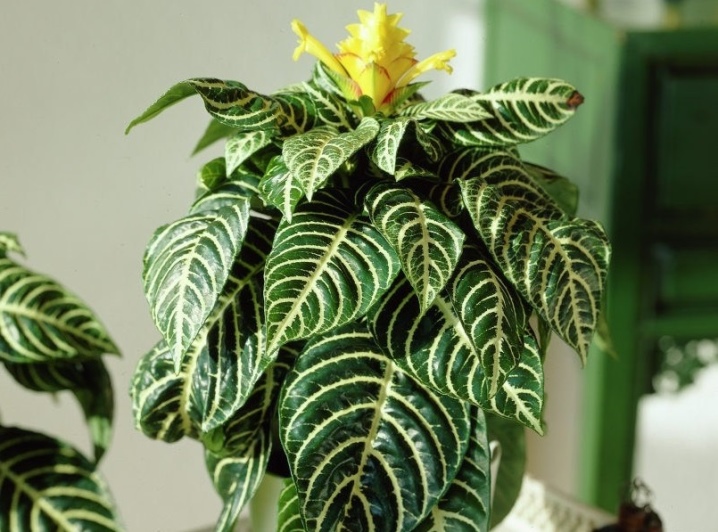
You can get acquainted with the features of caring for such a indoor flower as pachistachis in the next video.































The comment was sent successfully.